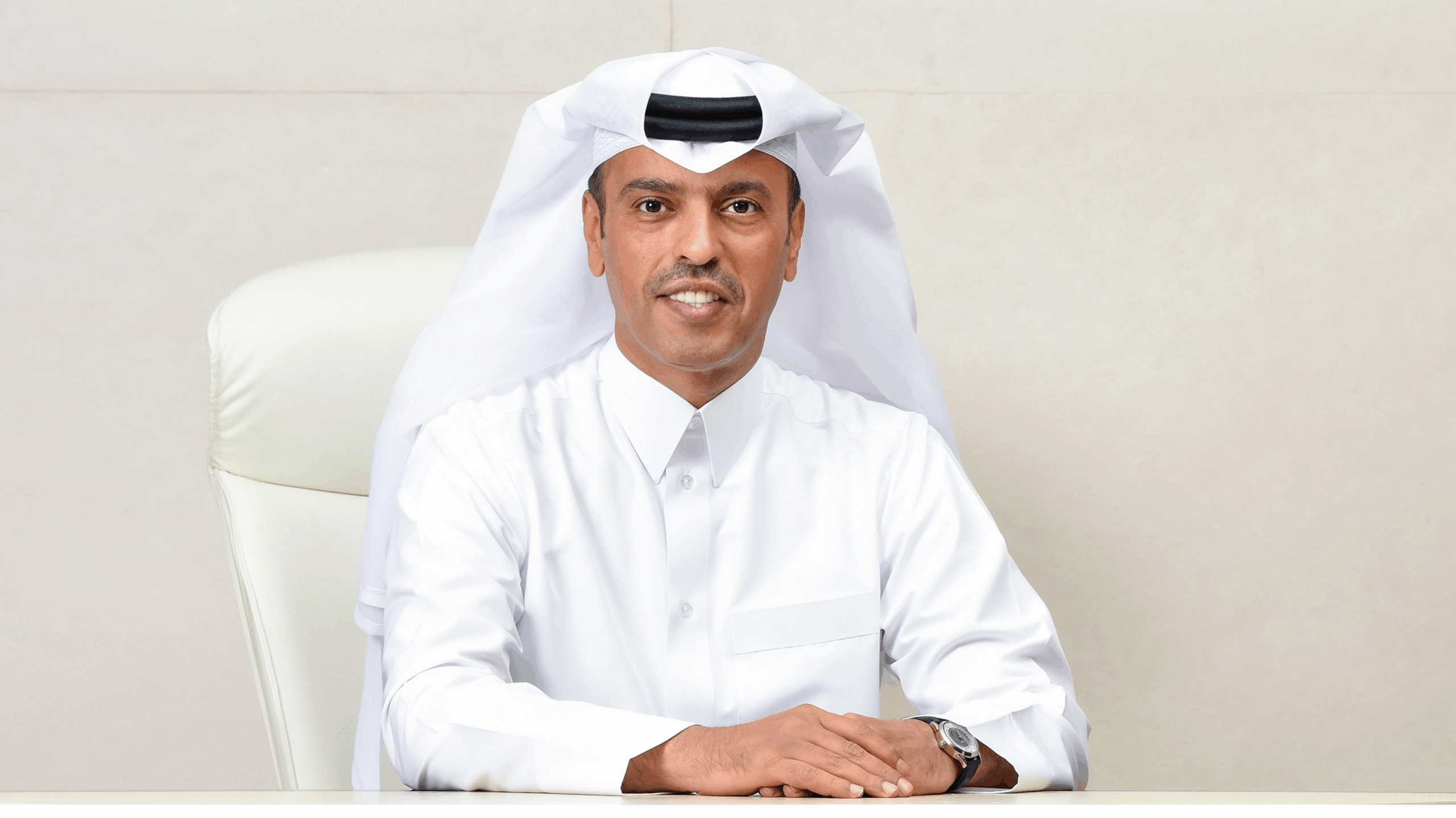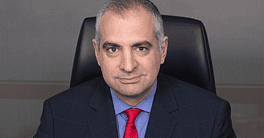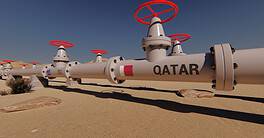UPWARD TRAJECTORY
Moderated By Denise Bedell
At a roundtable in Makati City, Manila, Global Finance brought together key banking and corporate figures in the Philippines to discuss how they are responding to the challenges they face in attracting global investment and growing the domestic labor market.
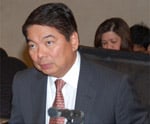
AMANDO TETANGCO JR
is in his second term as governor of the Bangko Sentral ng Pilipinas. As BSP Governor, he serves as chairman of the Monetary Board, the BSP’s principal monetary policymaking body. He is also the chairman of the Anti—Money Laundering Council (AMLC). A career central banker, governor Tetangco has been in the service of the BSP for more than three decades. He has also served as alternate executive director of the International Monetary Fund in Washington, DC, from 1992 to 1994.
Denise Bedell, managing editor, Global Finance : Thank you very much for joining us today for the Global Finance Roundtable on the Philippines. Governor Tetangco, would you care to open with a few words?
Amando Tetangco Jr, governor, Bangko Sentral ng Pilipinas : We have been growing at a fairly respectable pace. This sustained growth is in part due to stable macroeconomic conditions in the country, which remained steady throughout the global economic crisis and have continued on a constant path since then. Inflation has been stable and has remained within the official government target range of 3% to 5%.
Banks are seeing all-time highs in terms of profits, and bank credit has also been growing strongly. The average NPL ratio has also gone down to 2.4% for both universal and commercial banks. This is even below the pre-1997 NPL ratios of about 4%. So there has been a clear improvement. The exchange rate has continued to move together with currencies in the region, and in terms of volatility the peso has been closer to the lower end of those of currencies in the region. It is our expectation that this stable macroeconomic environment will continue.
We have also put in place banking system reforms to strengthen the management and governance, as well as the supervision, of financial institutions. All in all, we have created a stable and predictable foundation that should help convince investors to decide in favor of the Philippines.
Bedell: Will this open the door to greater foreign investment—both for portfolio and potentially FDI?
Tetangco: Yes. The Bangko Sentral ng Pilipinas believes our macroeconomic stability and growth will help bring in foreign investments. At the same time, the government continues to have the space for fiscal adjustments. And because our interest rates, unlike those in other jurisdictions, are not near zero at this point, there is room for the BSP to make monetary policy adjustments should there be a need, if the exterior environment continues to deteriorate, for example.
On the fiscal side, the deficit was substantially less than projected and the tax collection has improved. The national government is therefore in a good position to increase spending—particularly for infrastructure. The other important aspect for government policy is improved governance. Congress passed a law to improve governance among government-owned and-controlled corporations (GOCCs). To help implement this law, the government created the Governance Commission for Government Owned and Controlled Corporations, to make sure that policies are instituted consistently. I think this will level the playing field and make the environment more attractive to foreign investors.
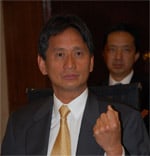
ROBERTO PANLILIO
is managing director and senior country officer at J.P. Morgan Philippines. He has been the Philippines’ senior country officer at the bank since joining Chase Manhattan in 1999. Prior to that, Mr Panlilio was senior executive vice president and COO of Philippine Commercial International Bank, which he joined from Citibank. He held posts with Citi in the Philippines, Hong Kong and Malaysia. He is a member of the American Chamber of Commerce and the Bankers Association of the Philippines. He is governor of the Philippine Association of Stock Brokers & Dealers.
Roberto Juanchito Dispo, president, First Metro Investment Corporation: We command a very favorable market and economic environment right now. In fact, in 2011 the Philippine capital markets raised around $6.2 billion, which is a record year for capital raising—compared to $5 billion in 2010. There were a lot of mergers and acquisitions and a lot of capital raised for project finance.
We have to commend the government for lengthening the available benchmark tenor in the market by issuing a 25-year bond. This is helpful to the project finance markets—since power, utility and other infrastructure projects are long-term. With this active benchmark of 25 years, banks are becoming more and more accustomed to locking in their money with long-dated projects. There will be big fund-raising requirements this year for utilities, power, gaming, the consumer sector, construction and mining.
Felipe Gozon, Chairman & CEO, GMA Network: Increasing foreign direct investment could spell more jobs. But we do have a few issues that must be addressed to make the Philippines a more favorable environment for foreign investors. The cost of power is a big problem here. We are either number one or two in Asia in terms of power costs, and number two or three in the world. Outside of the fiscal and monetary policies, government policies and judiciary rules should be stable and predictable, which is something of an issue here. As a businessman I’d like to know that when I invest my funds and something happens, I have a court that I can turn to and get a fair deal.
Bedell: Is the separation of national and regional governments and their different agendas an issue?
Gozon: Yes, very much so, because the influence and power of the national government is limited. For example, in setting up a business, there is red tape with the Department of Trade; and then there is the local government to deal with. The local government is more interested in the local environment, and often, local policy can be contrary to national policy. That has to be cured by legislation. Our government has to make the investment environment very friendly to those who want to invest directly. Even our natural resource industries struggle to get investment. We have a very rich natural mineral resource pool because we are part of the Ring of Fire volcanic zone that produces gold, copper and so on. But it is like a maze for any foreign investor to make, for example, a big mining investment here. Our government should take the lead and decide once and for all what it wants to do, because it cannot please everybody.
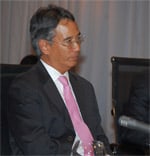
AURELIO MONTINOLA III
is the president and CEO of Bank of the Philippine Islands. He also holds the posts of president of the Bankers Association of the Philippines; vice chairman of the Mastercard Asia/Pacific Regional Advisory Board; director at Ayala Land Inc; vice chairman and president of the BPI Foundation; vice chairman of Far Eastern University; vice chairman of Republic Cement Corporation; and director at the Makati Business Club.
Aurelio Montinola III, CEO, Bank of the Philippine Islands: Banks are supposed to mirror the economy. The good news is that we have had a very favorable macroeconomic environment, and on the fiscal side, the department of finance has done its share to bring down the interest rates and achieve a credit upgrade effectively—two things that give the people confidence—and as the governor puts it, a good economic environment. So the result is that the entire banking system at least as of today is healthy, liquid and profitable: Healthy because the capital adequacy ratios are high—the average is around 14%—and NPL ratios are low. The liquidity is also quite clear: There are about 1.8 trillion pesos held in special deposit accounts (SDAs), which hopefully can be channeled to create long-term investment. Lending growth was close to 20% for 2011, and the bank average lending rate continues to fall: In 2001 it was 12.4%, in 2006 it was 9.71%, and today it is about 6.7%.
Sergio Zanatti, consumer business manager, Citi Philippines: Clearly the Philippines is very well positioned for delivering future growth. Last year we published a report listing the Philippines as one of 11 countries—globally—that can deliver sustainable growth over the next few decades. The 3G (Global Growth Generators) Report introduced the concept of a 3G index, which took into account several components including domestic saving investment, demographic prospects, health, education, quality of institutions and policies and trade openness. The Philippines came out quite well, and we reported that it will likely stand out in a globally-integrated economy over the next 40 years. We all agree that basic infrastructure challenges around power are something that we need to address. Plus, basic infrastructure for airports, roads and so on are critical. On the fiscal side, we have seen some improvements with tax collection, but we need to look at that further to put a robust process and infrastructure in place to ensure the government gets the proper funds for future projects. But in general, we see big upside for the Philippines.
Roberto Panlilio, senior country officer, Philippines, J.P. Morgan: We have low interest rates, a very stable currency and a government that people feel relatively good about. And it is clear that investors are finally taking a look again at the Philippines in terms of not just foreign portfolio investments but foreign direct investments as well. The hot spots are tourism, mining, BPOs (business processing outsourcing) and other services industries. Also investors are hoping that the Public Private Partnership (PPP) program for infrastructure will finally take off.
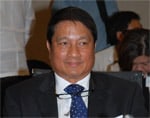
FRANCISCO DEL ROSARIO, JR
is president and CEO of the Development Bank of the Philippines.He holds posts as chairman of DBP Leasing Corporation, DBP Data Center and DBP-Daiwa Capital Markets Philippines. He is vice chairman of LGU Guarantee Corporation and a director of Al-Amanah Islamic Investment Bank of the Philippines, Megalink, DBP Daiwa Securities,d DBP Management Corporation. Mr Del Rosario is also a trustee for the Millennium Challenge Account-Philippines, Habitat for Humanity Philippines, the National Renewable Energy Board, and the Philippine Navy Board of Advisors.
Francisco Del Rosario Jr, CEO, Development Bank of the Philippines: I agree with everyone that there is tremendous growth potential as far as the Philippines is concerned. But the central issue is sustainable global growth. The US, Europe and Japan account for almost half of our exports. In the services industry, the US accounts for about 75% of the BPO business, and Europe another 7%. So we are vulnerable to what’s happening globally. One thing that we have to take into consideration is the cost of doing business here. We have to be mindful of this—especially our energy costs and labor costs.
Bedell: Given weaker global growth prospects and the uncertain global environment, what impact will this have on the Philippines’ economy?
Dispo: In the World Economic Forum Global Competitiveness survey, the Philippines moved up, from 85 to 75—but 75 is still too far from, say, the top 25. In the IFC (International Finance Corporation) survey on the attractiveness of doing business, the Philippines slipped two notches—from 134 to 136. But in the Transparency International survey last year, we advanced from 136 to 129.
These surveys reflect three compelling challenges that must be addressed by the Philippines: corruption, inadequate infrastructure and the need for improved fiscal procedures to reduce waste and increase transparency and culpability. The key here is that the priorities of the government are well placed, and the main programs they are pursuing squarely address the three challenges that were pointed out by the World Economic Forum, the IFC and Transparency International. Focusing on the identified concerns will help the country increase competitiveness and boost attraction to foreign investors. Now, we need to keep an eye on the remaining factors affecting an investment decision: the country risk factors; the buyer’s ease of entry; the return on investments; and the advantages they gain when they get into the country—educated labor force, labor costs and so on.
Del Rosario: Getting to where we are today has actually happened over a period of roughly 20 years. The (Philippine Economic Zone Authority) PEZA special economic zones, for example—where companies get facilities and special incentives to locate there—were set up in 1995. And then you have two major industries that were created out of nothing: business process outsourcing and remittances. The remittance industry is 20 years old and effectively started as a social obligation of the banks to take care of foreign workers abroad. From that they built a business that has become a permanent and important industry. And then there is BPO.
It was only about five years ago that this began here. A report was released looking at the development of the industry in India, which suggested that if India could get from zero to a $35 billion industry within X number of years, why couldn’t the Philippines get from zero to $16 billion within Y number of years? We are already at the $11 billion mark.
Bedell: Remittances and BPO are both key drivers of the Philippine economy. What are the risks here, how do the demographics and socioeconomic profile of the country lend themselves to continued development in terms of services and how central this will be to Philippine growth going forward?
Tetangco: BPOs bring in about $10 billion right now—about 5% or 6% of GDP—and remittance income in 2011 was $20 billion—which would be about 11% of GDP. So between these two sectors we have got about 16% of GDP. Given the importance of these two sectors, government policy must reflect that. The government is trying to strike a balance between calls for greater national identity and being more competitive in terms of investment.
Montinola: The biggest risk, of course, is if the countries to which we are supplying BPO services—or that are big destinations for overseas foreign workers (OFW)—become more protectionist as a result of the market environment. But for remittances, in many of these countries the locals do not necessarily want to be in the jobs that our people are in. And we are known for our friendly customer service and good English, which make us ideal for the services industry worldwide. From a remittances growth standpoint, perhaps the most important aspect is that we are diversified around the world. So if one market gets hit with a slowdown, we still have remittances coming from all over the world. There are over a million Filipinos working in Saudi Arabia, for example.
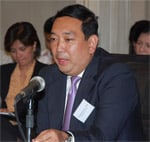
ROBERTO JUANCHITO DISPO
is president and member of the board of directors of First Metro Investment Corporation. He is a member of the advisory board of Metropolitan Bank & Trust Company; chairman of First Metro Securities Brokerage; vice chairman of First Metro Asset Management and PBC Capital Investment Corporation; and president of Resiliency (SPC). Mr Dispo is a director of the Money Market Association of the Philippines. Before joining First Metro Investment in 1998, he served as deputy treasurer of the Philippines. He is listed in the roster of World Experts in Debt Management by the United Nations Institute for Training and Research (UNITAR).
Dispo: Even during the worst stage of the financial crisis, remittances were actually stable and continued to show growth. So the inflow of remittances has been tested already and has been somehow insulated from these crises. It’s fairly diversified, so it is not really vulnerable to one unique event.
Zanatti : The BPO industry has clearly done well and is creating a significant number of jobs and investments. But the key challenge with BPO is that we need to take it to the next level and add other high-value services and higher-level functions.
We have operations here in Manila that provide payroll services as well as financial and accounting services. We were one of the first to invest in this space in 2004 and have since witnessed its dramatic growth, which will likely continue in the next five years. If we look 10 years down the road, this can become a $20 billion to $25 billion industry, which will rival OFW remittances. On the demographics side, there is a combination of attitude and skills that are superior in the Philippines. We have the English language proficiency that you just do not see in other BPO markets, and it is not easy to provide very high quality standards of service. I think that is unique to the Philippines. The Philippines is just 10% of overall BPO volumes worldwide, so there is absolutely upside to take it to the next level.
On the risk to remittances, say we are looking at another global slowdown. Let’s break down the flow of remittances between land-based—meaning workers that go to Singapore or to the Middle East, for example—and sea-based—those that sign up as crew for shipping, oil tankers and luxury ships. While the former may be affected, the latter continues to grow at a very upbeat pace of 15% to 20%, and that will probably provide us with a lot more cushion in this environment. Latest estimates show that 10% of the population, on average, lives outside the Philippines. That’s a market of 10 million to 12 million potential remitters, which is why even in a slowdown, it’s possible to expect a 5% to 6% growth annually.
Montinola: We have an opportunity to double the BPO industry within the next seven or eight years. The skills and education level are going up, which is critical to high-value BPOs. I remember when the industry started here it was basically about call centers. Then it became data and now we are doing accounting services. We are also getting a lot of contingency planning second-site business for primary BPO operations in India.
Tetangco: If one looks at the balance of payments, the Philippines will show a merchandise trade deficit, so we are importing more than we are exporting. But the current account is in surplus. And the surplus is coming from remittances and BPO receipts. For 2012 we are looking at 5% growth in remittances, so this would bring remittance income to over $21 billion for the whole year. But clearly we cannot continue to rely on remittances; we’ve got to generate jobs here.
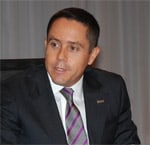
SERGIO ZANATTI
is consumer business manager for Citi Philippines. Mr Zanatti has held various senior executive positions in Citi’s consumer and cards businesses, first in Peru, and then in the Dominican Republic, Argentina and South Korea over a span of 14 years. From 2006 to 2010, he served as country marketing director in Korea, executive vice president and cards business group head for Citibank Korea. He was country business manager of the Dominican Republic in 2002. He then moved to Argentina, where he stayed until 2006 as chief operating officer and LATAM South Region strategic planning head.
Bedell: What is the outlook for foreign portfolio investments?
Dispo: The Philippine capital markets will continue to attract a huge amount of portfolio flows because of good returns. There is relatively easy entry and exit for investors because we have a highly liquid market both for the equity and fixed income. The Philippine equity market was the best-performing equity market in the region last year. It was second only to Dow Jones worldwide. Our index is around 4700 at this point, and it’s expected to be at 5000-plus at the end of the year with a good return of 12% to 15%.
Tetangco: Portfolio inflows particularly are quite a boon to liquidity, but at the same time they carry certain risks and issues. That is the big challenge for the BSP—how to handle volatile flows and manage the currency. You have to be prepared to deal with the reversals. In our case, we have not relied solely on policy interest rates; rather, we use an enhanced toolkit. We also have a fairly comfortable level of foreign reserves—over $75 billion, more than 11 months’ worth of imports of goods and services, which is a substantial cushion.
Bedell: The government has embarked on targeted spending to increase participation of the private sector in infrastructure development. What impacts will PPP and other policy initiatives have on supporting economic stability?
Tetangco: Based on the reports that I have from the department of budget and management, the government has released over 70% of the budget for infrastructure spending for 2012. This is going to fire up the fiscal engine. The monetary engine has been running for some time now, but the fiscal engine was somewhat stalled for a time because of the need for improvement in governance.
Panlilio: Yes, for example, improving the bidding process.
Tetangco: So this should help the economy in 2012, especially if the external environment proves to be even more difficult. We need to generate domestic growth, and this will be one source of domestic growth for us. The target is 5% to 6% GDP growth for 2012.
Dispo: My concern about the Philippine budget is that on the surface it appears to be big. It is 1.43 trillion pesos ($33.5 billion), but if you take out the ongoing expenditures—which take up about 80% of the budget—it leaves only about 500 billion pesos for growth-generating activities. I think the government can afford a higher budget or even a deficit at this point in order to really kick off massive infrastructure programs for Philippine economic stimulus.
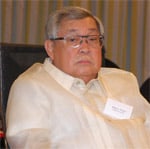
FELIPE GOZON
is GMA Network’s chairman of the board and CEO. Serving as chairman since 1975, he is credited with steering GMA to become the number one television network in the Philippines. An accomplished lawyer, he holds a bachelor of laws degree (UP, 1962) and a Master of Laws degree (Yale University, 1965) and is a member of many local and international honor societies and bar associations. Mr Gozon has been consistently listed among BizNews Asia’s Power 100 (2003 to 2010). In 2010, he earned the distinction of being the only Filipino to be selected as a member of the Advisory Board for the Asian Television Awards (ATA).
Gozon: Because of the problems in Europe and the very slow recovery in the United States, we really need to focus on priming the economy. I think the budget should be even higher than what they think they should spend at the moment.
Panlilio: You can never underestimate how bad the world could become. We are connected to the whole world, and if the whole world slows down because of the eurozone, we are going to get hit. Fortunately we have some practical tools to deal with that: One is obviously the government stepping up the PPP and infrastructure stimulus, and as the governor has said, they have policy room to bring interest rates down should it be necessary. Now that you have 155 billion pesos on paper dedicated to infrastructure spending, I hope that at the end of the year 155 billion pesos—and not 15 billion pesos— will have been spent.
Montinola: On the topic of global issues, we clearly need to watch developments both in the US and Europe. We have to look out for false starts in the US as we saw in 2009; and then in Europe, of course, there is the debt crisis, which will take time to be resolved.
Tetangco: But I want to point out that when the problems started to emerge in the US in 2007, the banks here responded quickly. And now, for banks here, just 1.4% of total assets—covering all types of exposures—are European. So it’s very small.
Bedell: Let’s move on to monetary policy. We have seen some easing of late, most recently with the 25 basis points policy rate cut earlier this month. What factors will most influence monetary policy over the coming months?
Tetangco: The BSP has been very transparent in the direction of monetary action, and because of that, monetary policy has become something of a catalyst in improving business and consumer confidence. We conduct monetary policy under an inflation-targeting framework. So we pay particular attention to the inflation forecasts. Right now, our forecasts show we are well within the target inflation range for the policy horizon. This means we have flexibility in terms of calibrating our policy.
We reduced interest rates earlier this year. When the Monetary Board decided to take that action, it also announced that should the external environment deteriorate further, then the Board could consider further rate reduction. Right now, economic growth is the main focus because inflation expectations are being met. In addition, we have been able to achieve a strong degree of credibility, in part because of how we have explained policy developments, and in part because of how we have communicated possible future policy calibration.

